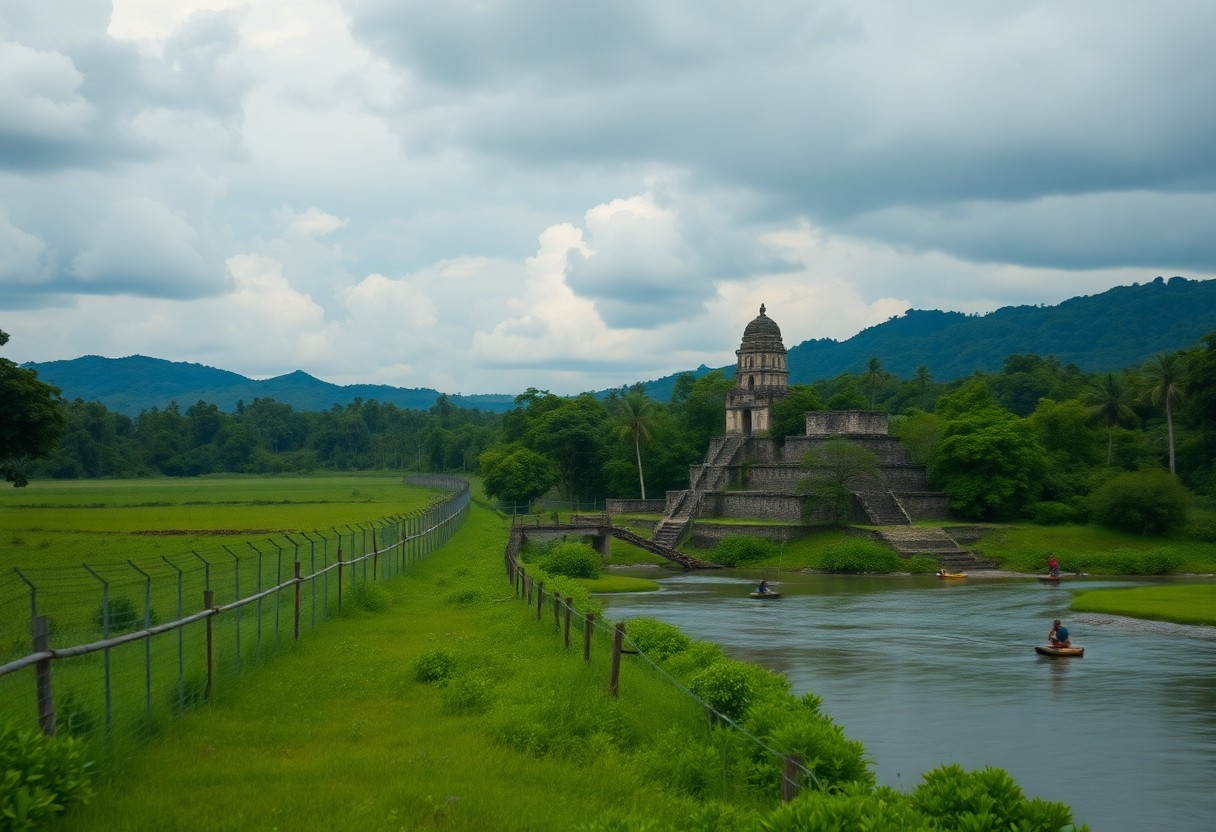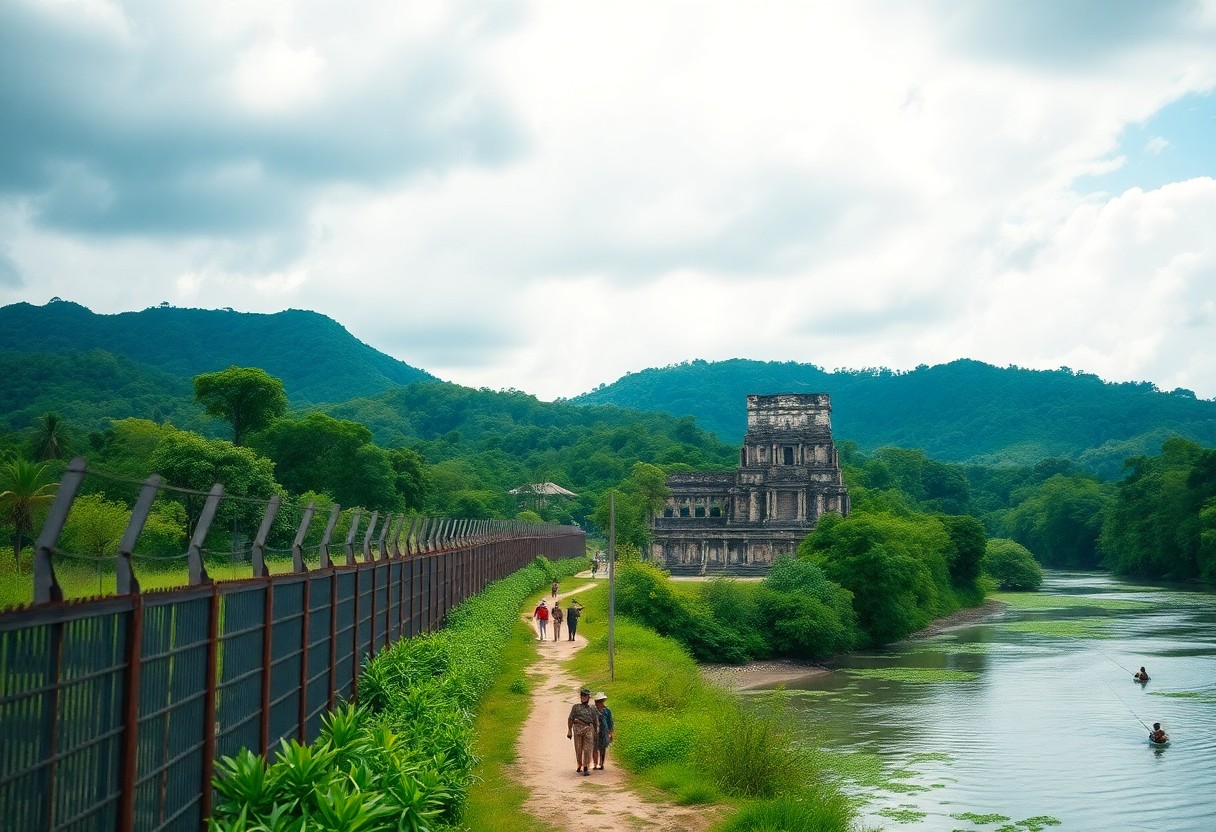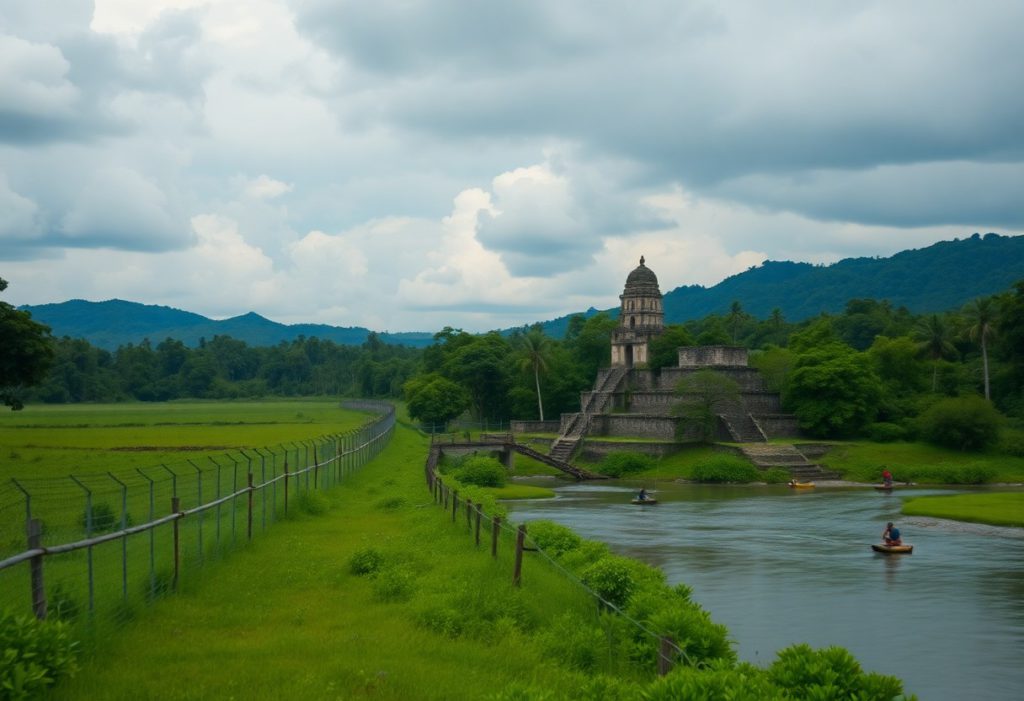The territorial dispute between Belize and Guatemala is a complex geopolitical conflict that has endured for centuries, showcasing its profound intricacies. This ongoing border conflict is deeply embedded in colonial-era territorial claims and has historically jeopardized regional stability, with Guatemala persistently contesting Belize’s sovereignty since its independence. Despite decades marked by diplomatic friction and mounting tensions, recent developments have sparked a newfound optimism for peaceful resolution. A significant milestone occurred during the landmark 2019 referendum, where citizens from both nations voted to pursue their differences through the International Court of Justice. This initiative represents a potential turning point in their contentious relations. Gaining a thorough understanding of the complex history surrounding this border is crucial for appreciating the broader geopolitical dynamics of Central America.

Exploring the Colonial Roots of the Belize-Guatemala Territorial Dispute
The origins of the territorial disagreement between Belize and Guatemala can be traced back to colonial-era territorial claims, heavily influenced by Spanish imperial ambitions and the expansion of British colonial interests. This dispute arose from the conflicting aspirations of European powers in Central America, with both nations asserting territorial claims over strategically vital regions. The unresolved boundary issues have since transformed into a persistent source of tension, reflecting the intricate historical dynamics surrounding territorial sovereignty in the area. The enduring legacy of these colonial claims continues to shape the political landscape today, illustrating how historical grievances significantly impact contemporary diplomatic relations.
Assessing the Impact of the 1859 Boundary Treaty on Territorial Claims
Amid the backdrop of imperial negotiations, the 1859 Boundary Treaty between Britain and Guatemala was intended to define territorial borders. However, rather than resolving the conflicts, this agreement inadvertently complicated matters further. The treaty’s ambiguous language and varying interpretations have become a central source of ongoing territorial disputes between the two nations. The complexities associated with the treaty underscore the lasting effects of colonial agreements on modern conflicts, as both Belize and Guatemala continue to grapple with the ramifications of historical treaties that resonate in present-day diplomatic exchanges.
Understanding the Historical Negotiations Impacting Territorial Claims
Tracing the journey from Spanish colonial rule to the emergence of modern nation-states reveals a complex terrain of territorial negotiations. The geopolitical dynamic of the region has been significantly influenced by imperial rivalries and the shifting boundaries of colonial territories, establishing a foundation for future conflicts. These boundary disputes reflect a deeper narrative intertwined with colonial legacies and postcolonial territorial challenges. The strategic importance of the territory has historically fueled conflicts, with Guatemala persistently contesting Belize’s sovereignty. The multifaceted nature of this dispute encompasses issues of historical interpretation, indigenous rights, and territorial integrity, rendering it a complex international controversy that continues to shape diplomatic relations between both nations.
Identifying the Core Issues Behind the Belize-Guatemala Border Dispute
The complex border dispute between Belize and Guatemala involves a rich array of historical, territorial, and political dimensions. Key tensions arise from competing claims regarding land, sovereignty, and differing historical interpretations. This conflict, deeply rooted in colonial borders, has been perpetuated by international legal disputes and persistent nationalist sentiments, posing significant diplomatic challenges for both countries. Understanding these core issues is crucial for addressing the complexities of the dispute and working towards a resolution that acknowledges the interests of both nations, while fostering a cooperative regional atmosphere.
Analyzing Guatemala’s Claims to Territorial Rights
Guatemala asserts its claim over approximately 12,000 square kilometres of Belizean territory, basing its argument on historical rights derived from Spanish colonial boundaries. This claim challenges the legitimacy of British territorial acquisitions, focusing on interpretations of historical treaties and colonial agreements that Guatemala argues were inequitably enforced. Such assertions illustrate Guatemala's ongoing quest to reclaim what it considers ancestral land, emphasizing the deep-rooted grievances that drive the dispute. Hence, it highlights the necessity for a nuanced resolution approach that respects historical claims while striving for equitable solutions.
Upholding Belize's Sovereignty and Territorial Claims
The debate surrounding Belizean sovereignty emphasizes the nation’s right to self-determination and the safeguarding of its territorial integrity. Belize firmly asserts its independence and categorically rejects Guatemala’s territorial claims, underscoring the significance of international recognition and the legal principle of uti possidetis juris, which upholds existing colonial boundaries post-independence. Further exploration reveals that Belize’s sovereignty is reinforced by international law and a multitude of United Nations resolutions. The country has consistently championed its territorial integrity, leveraging diplomatic channels and garnering international support to strengthen its borders. Additionally, peaceful resolution mechanisms, including international mediation, have become essential strategies in addressing this long-standing dispute, showcasing Belize's commitment to diplomacy.

Evaluating Diplomatic Initiatives Aimed at Resolving the Dispute
Efforts to mitigate the persistent border conflict between Belize and Guatemala have incorporated various international mechanisms and negotiations. Both nations acknowledge the potential risks linked to ongoing territorial tensions, prompting them to pursue peaceful solutions through diplomatic channels. International mediation and bilateral discussions have played crucial roles in gradually alleviating historical animosities and paving pathways towards resolution. Understanding these diplomatic efforts sheds light on the progress achieved and the challenges that persist in attaining lasting peace, as well as the importance of collaborative approaches to conflict resolution.
Gaining Perspective on the Diplomatic Negotiations
The diplomatic negotiations between Belize and Guatemala have been marked by gradual advancements and strategic dialogue, aimed at fostering mutual understanding. These discussions have concentrated on exploring possible compromise solutions that could fulfill the interests of both nations. Key diplomatic initiatives have included high-level meetings, bilateral commissions, and international facilitation, all aimed at addressing territorial claims and promoting regional stability. This ongoing dialogue emphasizes the significance of diplomacy in resolving complex geopolitical issues, demonstrating how sustained engagement can yield productive outcomes.
The Pivotal Role of the International Court of Justice in Mediation Efforts
The International Court of Justice (ICJ) plays a vital role in mediating the border dispute between Belize and Guatemala. The ICJ serves as a neutral legal platform for addressing territorial claims, offering an internationally recognised mechanism for dispute resolution that has the potential to resolve decades of territorial tensions. The court's involvement transcends mere arbitration; it signifies a critical juncture in Belize-Guatemala relations. By agreeing to present their dispute to the ICJ, both countries have exhibited a commitment to seeking peaceful resolution. The court's impending ruling could decisively delineate territorial boundaries, potentially establishing a lasting legal framework for future bilateral relations and enhancing regional stability.

Assessing the Influence of the Dispute on Travel and Trade Dynamics
Navigating the complex Belize-Guatemala border necessitates a comprehensive understanding of its multifaceted challenges. The historical territorial disputes have significantly affected cross-border interactions, molding unique travel and economic dynamics. The ongoing tensions have impacted transportation routes, trade patterns, and diplomatic relations between these neighbouring countries. The border region requires careful consideration of geopolitical sensitivities that may influence movement and economic exchanges, making it essential for travellers to stay well-informed and prepared regarding their travel plans.
Essential Travel Guidelines for Safety and Awareness
Traveling along the Belize-Guatemala border necessitates exercising heightened caution. Ensuring your safety relies on being informed about current diplomatic conditions and potential conflict zones. Official travel advisories recommend consulting government websites prior to crossing, verifying necessary documentation, and maintaining awareness of local security situations. Careful route planning, including utilizing official border crossing points, can minimize risks and enhance your travel experience in this sensitive region, ensuring a safe and enjoyable journey.
Delving into Cross-Border Trade Dynamics and Economic Interdependence
The trade relations at the Belize-Guatemala border remain intricate and continually evolving. Despite historical tensions, agricultural products and small-scale commercial exchanges persist, reflecting the economic interdependence that continues to exist between these two nations. To fully grasp these interactions, one must recognize the resilience of economic relationships that thrive despite political challenges. The trade landscape reveals a complex web of interactions where agricultural commodities such as sugar, citrus, and timber play significant roles in cross-border exchanges. Informal trade networks, fostered by local merchants, navigate the diplomatic complexities, demonstrating how economic cooperation can endure amidst territorial disputes. Ongoing bilateral agreements and diplomatic negotiations continue to shape these economic interactions, presenting promising prospects for future collaboration and mutual benefits.
Examining the Socio-Political Ramifications of the Belize-Guatemala Dispute
The border dispute between Belize and Guatemala transcends mere geographical lines, embodying profound socio-political ramifications for both nations. This territorial conflict significantly influences diplomatic relations, national security strategies, and overarching regional dynamics. The persistent tensions create intricate socio-political challenges that affect governmental strategies, international negotiations, and the daily lives of citizens in both countries. Understanding these implications is essential for comprehending the broader effects of the dispute on the region and the associated challenges that arise.
Investigating National Identity and Public Sentiment Regarding the Dispute
The border dispute profoundly resonates with national pride and historical narratives in both Belize and Guatemala. Both countries view the territorial claims as fundamental to their sovereignty, leading to passionate public discourse and political sentiment. This conflict has evolved into a symbol of national identity, as citizens vigorously defend their historical perspectives and territorial integrity. The emotional weight of these claims shapes public opinion, influencing political discourse and national policy, thereby underscoring the intricate relationship between territorial disputes and national identity that is palpable across both nations.
Evaluating Regional Stability and Security Challenges Arising from the Dispute
The ongoing border dispute presents potential vulnerabilities to regional peace and cooperation. Unresolved territorial claims generate diplomatic tensions that could destabilize bilateral relationships and affect broader regional security dynamics. Recognizing these challenges is crucial for understanding the complex geopolitical landscape of Central America. The dispute signifies more than a mere territorial disagreement; it poses threats to regional stability through the risk of military escalations. The persistent tensions complicate economic cooperation, cross-border trade, and collaborative security efforts. Awareness of these dynamics elucidates how unresolved territorial claims can hinder diplomatic progress and create long-term challenges for peaceful coexistence between Belize and Guatemala.
Envisioning Future Pathways for Resolving the Dispute
Despite the intricate historical tensions, the situation along the Belize-Guatemala border presents potential avenues for diplomatic resolution. Ongoing negotiations and international mediation hold the promise of achieving a peaceful settlement. The international community remains supportive of constructive dialogue between both nations, suggesting that a comprehensive resolution may be within reach in the coming years. The commitment to diplomacy signifies a crucial step toward addressing longstanding grievances and fostering a more stable future for both countries and their citizens.
Identifying Viable Solutions to the Territorial Dispute
Resolutions to the enduring territorial dispute may involve international arbitration or a mutually agreed-upon territorial compromise. Observing the recent willingness of both nations to engage in diplomatic discussions suggests that a mutually beneficial agreement might soon be attainable. The involvement of neutral international bodies could provide a structured framework for resolving historical claims, paving the way for more effective conflict resolution strategies that respect the sovereignty of both nations.
The Role of International Relations in Shaping Border Negotiations
International relations significantly impact the border negotiations between Belize and Guatemala. Diplomatic channels have emerged as vital tools for managing territorial tensions and encouraging dialogue. Regional organizations and global diplomatic platforms continue to play essential roles in facilitating discussions and pursuing peaceful solutions. Additionally, the broader geopolitical context influences these border relations, as international pressure and diplomatic engagement create opportunities for resolution. The potential for economic cooperation, joint development projects, and shared security interests presents promising pathways for collaboration. Organizations like the OAS have been instrumental in mediating discussions and promoting peaceful interactions between the two nations.
Common Questions About the Belize-Guatemala Territorial Dispute
Which Historical Elements Contributed to the Territorial Dispute Between Belize and Guatemala?
The territorial dispute originated from Spanish colonial claims and British settlement in the region during the 19th century. Spain initially claimed the territory, but Britain established settlements in Belize, leading to complex legal and territorial challenges. The conflict revolves around competing territorial assertions, with Guatemala maintaining claims to a substantial portion of Belize’s land following Central American independence in 1821, thereby creating a contentious historical backdrop.
How Has the International Community Supported the Resolution of the Long-Standing Border Conflict?
The Organization of American States (OAS) has played a significant mediating role. In 2008, both countries agreed to submit the dispute to the International Court of Justice (ICJ) for a binding resolution. A referendum in both Belize and Guatemala during 2018-2019 demonstrated public support for international judicial intervention, ultimately paving the way for a peaceful resolution mechanism and reinforcing the significance of international cooperation.
What Is the Current Status of the Belize-Guatemala Border Agreement?
In May 2019, the ICJ definitively ruled on the territorial dispute, largely affirming Belize’s sovereignty while making minor adjustments to the border demarcation. The ruling awarded Belize approximately 12,272 square kilometres of territory, providing a clear legal framework for future diplomatic relations and establishing permanent maritime and land boundaries between the two nations, thus enhancing regional stability.
The Article The Belize-Guatemala Border: History, Conflict, and Current Status appeared first on Belize Travel Guide
The Article Belize-Guatemala Border: Historical Conflicts and Current Status Was Found On https://limitsofstrategy.com
The Article Belize-Guatemala Border: Current Status and Historical Conflicts First Appeared ON
: https://ad4sc.com



What an intriguing dive into a topic that often feels like it’s been marinating in colonial history longer than some of my favorite dishes! The territorial dispute between Belize and Guatemala is like a family feud that refuses to die — and much like those long-winded holiday dinners with relatives, it seems to be filled with misunderstandings, resentment, and the occasional attempt at reconciliation that goes awry.